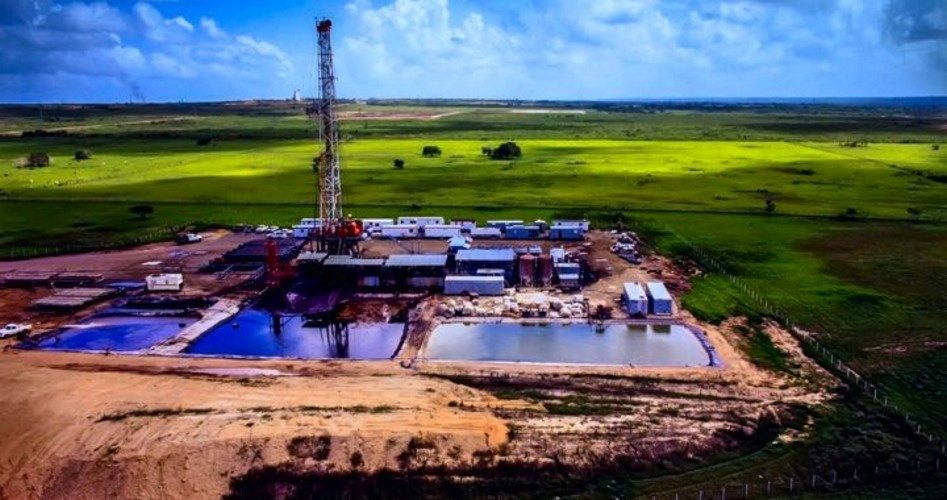
The report from the U.S. Energy Information Administration (EIA) on Tuesday merely confirmed what the agency predicted just a week earlier: The shale revolution in the United States will not only keep prices of oil and gas low into the foreseeable future, it will make the U.S. a net exporter of energy within 18 months.
The agency expects shale oil production from the seven major shale formations in the country to set a record in March at 8.4 million barrels per day (bpd). This will push total U.S. crude oil production to nearly 12 million bpd, ahead of both Saudi Arabia and Russia.
Bank of America predicts that this will keep crude oil prices locked between $50 and $70 a barrel, with emphasis on prices closer to the low end. That’s in spite of cuts in production from OPEC, and its non-member group headed by Russia, and reduced exports from Iran and Venezuela thanks to U.S. sanctions.
Demand for energy is slowing worldwide, especially in China where auto sales have been declining and manufacturing has slowed markedly. So sharply has the Chinese economy slowed that when a top official there opined that the real rate of growth is only 1.6 percent annually instead of the touted 6.3 percent from the government-controlled outlets, he was censured and removed from public view.
U.S. shale production is also causing a major reversal in Saudi Arabia. The crown prince set in motion his Vision 2030 in 2016 to be funded with the sale of part of the kingdom’s treasured oil company, Aramco. The plan was to take the company public, offering between five and 10 percent of it to investors, raising an estimated $100 billion. That would fund vast public works projects designed to diversify its economy away from its near total dependence upon oil.
But according to the Wall Street Journal, those plans, thanks to internal political pressure and U.S. shale producers keeping oil prices low, have been put on hold. Some are suggesting that Prince Mohammed bin Salman’s Vision 2030 has been discarded altogether in favor of expanding his country’s oil production capacities instead.
Part of the reason is that Aramco isn’t worth nearly as much as estimated. In order to make Vision 2030 fly, oil needed to be priced at $80 a barrel so that Aramco’s vast proven oil reserves (more than 360 billion barrels) would make the state-owned oil company worth at least $2 trillion. Thanks to U.S. oil producers keeping oil prices in the mid-50s, Aramco’s market value is between $650 million and $1.1 billion, far less than forecast and putting the prince’s great plans into the dumpster.
It hasn’t helped that the prince’s image has been severely tarnished by his costly war in Yemen, his blockade of once-friendly ally Qatar, and the murder of journalist Jamal Khashoggi.
The 180-degree shift by the kingdom from diversification away from oil to increased concentration on its production was explained by the kingdom’s oil minister, Khalid al-Falih: “We are no longer going to be inward looking and focused only monetizing the kingdom’s resources. Going forward the world is going to be Saudi Arabia’s playground.”
The oil minister is likely to be disappointed. The EIA forecasts that total U.S. crude oil production will average 12.4 million bpd this year and increase to 13.2 million bpd in 2020. That is having the expected inverse impact on energy imports. From the EIA’s report:
U.S. crude oil and petroleum product net imports are estimated to have fallen from an average of 3.8 million b/d in 2017 to an average of 2.4 million b/d in 2018.
EIA forecasts that net imports will continue to fall to an average of 0.9 million b/d in 2019 and to an average net export level of 0.3 million b/d in 2020.
In the fourth quarter of 2020, EIA forecasts the United States will be a net exporter of crude oil and petroleum products by about 1.1 million b/d. [Emphasis added.]
Saudi Arabia’s oil minister thinks the world will be his country’s playground. The reality will shortly reveal that the playground will be owned by the United States, thanks to the marvelous technology of fracking and horizontal drilling developed by free market entrepreneurial risk-takers such as Harold Hamm and George Mitchell.
Photo: DanielAzocar / iStock / Getty Images Plus
An Ivy League graduate and former investment advisor, Bob is a regular contributor to The New American blog primarily on economics and politics. He can be reached at [email protected].
Related articles:
EIA: U.S. Shortly to Become “the World’s Leading Producer of Crude Oil”



